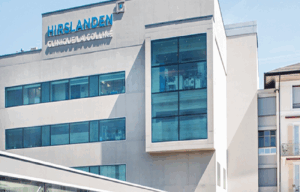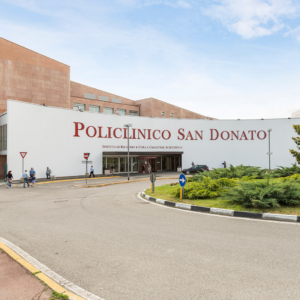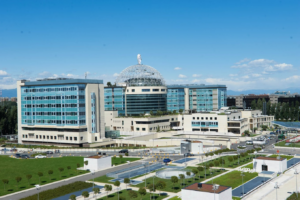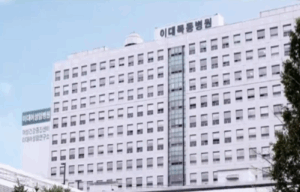Ovarian cancer
Disease Description
Ovarian cancer is a malignant tumor affecting the main female gonad. Cancer cells often affect only one ovary, but sometimes the disease spares neither. It can develop in patients of absolutely any age, but the peak incidence occurs between 40 and 60 years. Early detection of the pathology makes it possible to achieve a complete cure in 90% of cases.
Symptoms indicating the need for diagnosis and treatment
In the early stages, oncogenesis is asymptomatic. The first signs, appearing as the ovarian tumor grows, are nonspecific. These include:
- General weakness and drowsiness
- Menstrual cycle disorders
- Discomfort during urination
- Loss of appetite, rapid satiety, heartburn, and abdominal bloating
- Low-grade fever (around 37 degrees Celsius)
Later, symptoms become more pronounced:
- Increase in abdominal size
- Palpable mass (during bimanual pelvic examination)
- In late stages — ascites (accumulation of fluid in the abdominal cavity)
- Weight loss
Diagnosis and treatment methods
Diagnosis
In 75% of cases, ovarian cancer is diagnosed at advanced stages, when the patient presents with complaints. The five-year survival rate for stage 3—4 oncology is no more than 40%.
In the world’s top clinics, ultrasound is used as a screening test, allowing for a full assessment of the size and structure of the gonads. If abnormalities are detected (evaluation according to the O-RADS system), the next step — MRI in three-dimensional space — is recommended. The diagnostic combination of ultrasound plus MRI increases diagnostic accuracy to 98%.
In addition, a woman with suspected tumor is prescribed a series of laboratory tests, including a specific test for the cancer marker CA-125. In European clinics, it is possible to undergo all necessary examinations in one day.
Treatment
The main type of treatment at any stage is surgical intervention. At an early stage with low malignancy of the cancer, the tumor is removed without chemotherapy.
If chemotherapy cannot be avoided, a woman of reproductive age is offered cryopreservation of viable oocytes so that she can later give birth to a healthy baby.
In advanced cancer, removal of nearby structures — the uterine body, cervix, and fallopian tubes — is indicated. In Europe, for young nulliparous patients, the focus is on organ-preserving methods (the decision is made by a medical board).
Innovations in global clinics
Scientists from the Chinese Academy of Sciences have developed a highly potent drug for the treatment of ovarian tumors, with research results published in the journal Science Advances. The developers concluded that ovarian cancer depends on the mechanism of transcription termination involving CPSF3 activity and used this discovery in the creation of the medication.
Top clinics
-
 Seoul, South Korea Asan Medical Center
Seoul, South Korea Asan Medical Center -
 Jerusalem, Israel Hadassah Medical Center
Jerusalem, Israel Hadassah Medical Center -
 Petah Tikva, Israel Medical Center “Rabin”
Petah Tikva, Israel Medical Center “Rabin” -
 Istanbul, Turkey Medipol Mega University Hospital
Istanbul, Turkey Medipol Mega University Hospital -
 Istanbul, Turkey Istanbul Florence Nightingale Hospital
Istanbul, Turkey Istanbul Florence Nightingale Hospital -
 Geneva, Switzerland Hirslanden Clinique La Colline
Geneva, Switzerland Hirslanden Clinique La Colline -
 Geneva, Switzerland Generale-Beaulieu
Geneva, Switzerland Generale-Beaulieu -
 Baden-Baden, Germany Max Grundig Clinic
Baden-Baden, Germany Max Grundig Clinic -
 Istanbul, Turkey Acibadem Altunizade
Istanbul, Turkey Acibadem Altunizade -
 Antalya, Turkey Hospital Medical Park Antalya
Antalya, Turkey Hospital Medical Park Antalya -
 Dubai, UAE NMC Healthcare
Dubai, UAE NMC Healthcare -
 Milan, Italy “La Madonnina” clinic
Milan, Italy “La Madonnina” clinic -
 Milan, Italy San Donato Hospital in Milan, Italy
Milan, Italy San Donato Hospital in Milan, Italy -
 Milan, Italy San Raffaele University Hospital
Milan, Italy San Raffaele University Hospital -
 Abu Dhabi, UAE Burjeel Hospital Abu Dhabi
Abu Dhabi, UAE Burjeel Hospital Abu Dhabi -
 Vienna, Austria Debling Private Clinic
Vienna, Austria Debling Private Clinic -
 Heidelberg, Germany Heidelberg University Hospital
Heidelberg, Germany Heidelberg University Hospital -
 Hamburg, Germany Asklepios Nord Heidberg
Hamburg, Germany Asklepios Nord Heidberg -
 Dusseldorf, Germany FKKD Clinical Complex
Dusseldorf, Germany FKKD Clinical Complex -
 Winterthur, Switzerland Clinic "Lindberg"
Winterthur, Switzerland Clinic "Lindberg" -
 Incheon, South Korea Gil Medical Center at Gachon University
Incheon, South Korea Gil Medical Center at Gachon University -
 Lausanne, Switzerland Clinique Montchoisy
Lausanne, Switzerland Clinique Montchoisy -
 Nyon, Switzerland Clinique Genolier
Nyon, Switzerland Clinique Genolier -
 Istanbul, Turkey “Memorial Ataşehir” Clinic
Istanbul, Turkey “Memorial Ataşehir” Clinic -
 Barcelona, Spain QuironSalud Barcelona Hospital
Barcelona, Spain QuironSalud Barcelona Hospital -
 Barcelona, Spain Medical Center "Teknon"
Barcelona, Spain Medical Center "Teknon" -
 Barcelona, Spain University Hospital Barnaclinic+
Barcelona, Spain University Hospital Barnaclinic+ -
 Madrid, Spain University Hospital HM Monteprincipe
Madrid, Spain University Hospital HM Monteprincipe -
 Hamburg, Germany Asklepios Klinik Barmbek
Hamburg, Germany Asklepios Klinik Barmbek -
 Gebze, Turkey Anadolu Clinic
Gebze, Turkey Anadolu Clinic -
 Zurich, Switzerland Hirslanden Clinic
Zurich, Switzerland Hirslanden Clinic -
 Madrid, Spain Quiron Salud University Hospital
Madrid, Spain Quiron Salud University Hospital -
 Lugano, Switzerland Saint Anna Clinic
Lugano, Switzerland Saint Anna Clinic -
 Geneva, Switzerland Clinique des Grangettes
Geneva, Switzerland Clinique des Grangettes -
 Duesseldorf, Germany Oncological Center Dusseldorf
Duesseldorf, Germany Oncological Center Dusseldorf -
 Seoul, South Korea Samsung Medical Center
Seoul, South Korea Samsung Medical Center -
 Seoul, South Korea Medical Center at Ewha Womans University
Seoul, South Korea Medical Center at Ewha Womans University -
 SNUH
SNUH





































